Best Water For Cannabis Plants: Ideal PPM, pH & Temperature
Understanding the best water for cannabis plants is a fundamental factor every grower must grasp. It can mean the difference between success and failure. Water quality depends on how you treat your source.
Most plants, including cannabis, contain 80% water, which plays an important role in:
- Carrying minerals and dissolved nutrients across the plant.
- Providing the hydrogen molecule for making carbohydrates made through photosynthesis.
- Cooling down the plant and maintaining its structural integrity.
Read on to find out the ideal water pH, temperature, and PPM range or cannabis. We also look at the nuances of different water sources to ensure you give your plant the best H2O around.
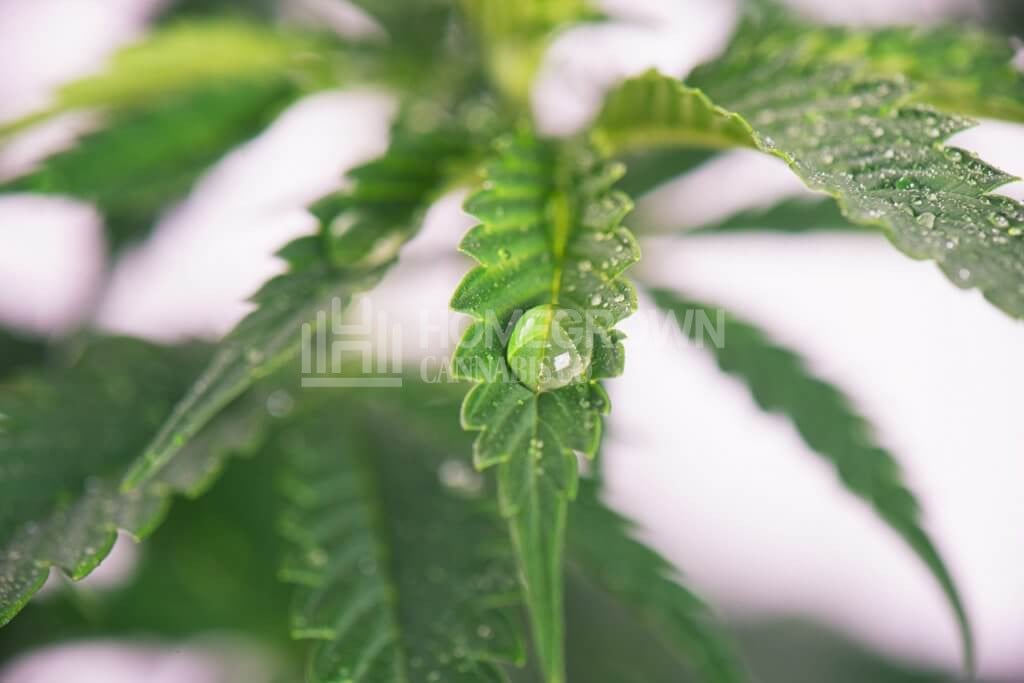
What to consider when choosing the best water for growing marijuana
The frequency of watering cannabis varies depending on the environment, medium, plant genetics, and grower's preferences. Ensure your water has the ideal pH, temperature, and PPM range for cannabis to avoid problems.
You don't have to worry quite as much about the PPM or EC if you're growing with organic soil mixes. Microorganisms in the medium work like a buffer, protecting against fluctuations.
Get a PPM meter to measure mineral content and know what you're putting into your plant. For example, hard water can build up salt in the soil and prevent other minerals from being absorbed by your plant.
If growing in a hydroponic system, you can gauge the state of water in the reservoir at any point in time. Below, we look into more detail regarding the factors you need to consider when choosing the best water for cannabis plants.
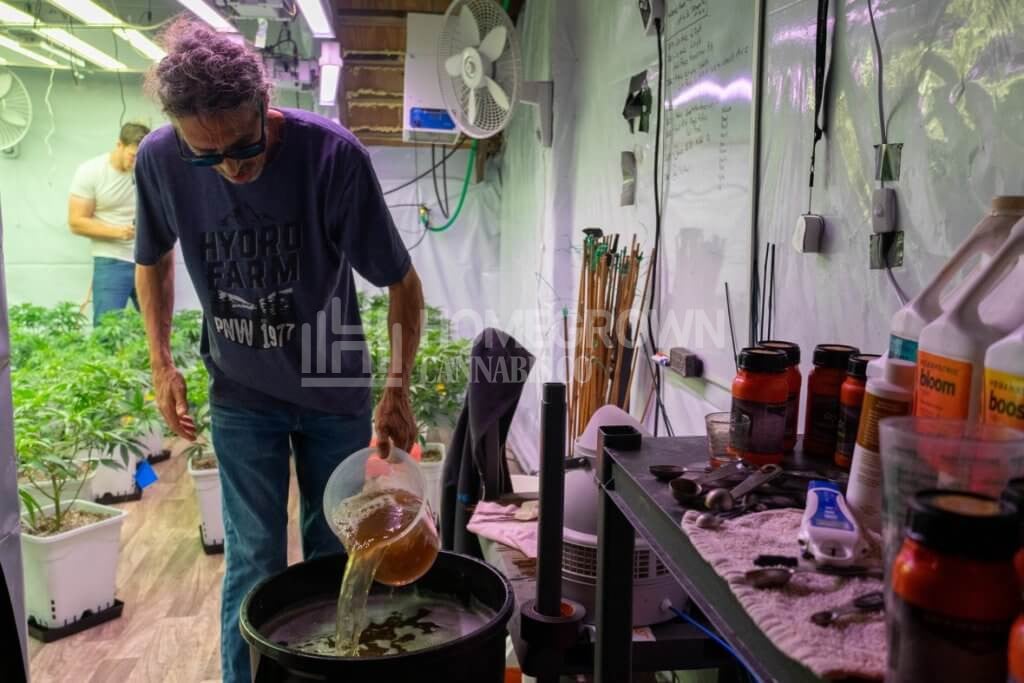
Water PPM for cannabis plants
PPM levels vary depending on where you live. You may have higher or lower than the ideal amount. Water from wells in rural areas usually has natural minerals, while city water has chemicals added to treat it. Regardless of the source, measure and adjust your water to get good PPM for marijuana and help your crop avoid toxicities or deficiencies.
PPM means parts per million and measures the number of minerals in your water or total dissolved solids (TDS). 1 PPM equates to 1 mg/l (1 milligram of contaminant per liter of water).
City dwellers often see PPM ranging from 50 to 300 right out of the tap, and those in the country using well water might see PPMs of 700, which is very high. A minor setback to city water is the chlorine that you have to purge by letting the water sit for a day or two in the open. Accelerate the rate of chlorine evaporation using air stones.
What should PPM be for cannabis? It varies throughout the growth cycle, as shown in the table below:
| Growth stage | PPM |
| Clones/ early veg | 500–600 |
| Late veg | 800–900 |
| Flowering | 1000–1100 |
The best PPM for cannabis plants can also change according to the strain, so keep an eye on it if you're varying genetics. Run your water through a filtration system if PPM is higher than the optimal range. Use cal-mag supplements if your water's too soft.
The best way to control the PPM range for cannabis is through a reverse osmosis system where water has 0 to 10 PPM. In this case, add stripped-out calcium and magnesium to the water as required.
Like PPM in growing marijuana, EC (electrical conductivity) is measured when adding nutrients to the water. Minerals increase H2O's electrical conductivity. A higher concentration of nutrients in the water results in a liquid fertilizer that conducts more electricity.
Can you water cannabis with hard water?
Yes, you can water cannabis with hard water mostly found in wells, but this source usually contains lots of heavy minerals and potential bacteria. Extremely high levels of calcium and magnesium can lead to nutrient lockouts.
The best water filter for growing marijuana is subject to the minerals you need to remove. Filter the water if PPM is above the recommended levels during each growth phase or add cal-mag supplements if lower.
You'll probably fall ill if your well water has pathogens and bacteria, which is also bad for plants.
Can you water cannabis with soft water?
No. Soft water (70–125 PPM) has low levels of calcium and magnesium, so add cal-mag to irrigate marijuana plants. Sources of soft water include rain and treated, bottled, or distilled water for cannabis. Municipalities “soften” it for home use because calcium impacts the taste a lot.
Heavily treated soft water also lacks beneficial bacteria and microbes, so you need to add that to your medium if using it.
How to measure the PPM of your water
Test your water source to see if it leans on the heavier nutrients or mineral content side or if it hits the sweet spot. PPMs are usually higher in well water because of a higher mineral content than filtered types. Test unfiltered tap water to balance and correct its hardness as necessary.
Get a TDS or EC meter from your local grow store or online to measure PPM. A good and accurate TDS tester is cheap, costing around $25. Getting the right PPM for cannabis plants is worth it. Test your water using your meter after calibrating the device.
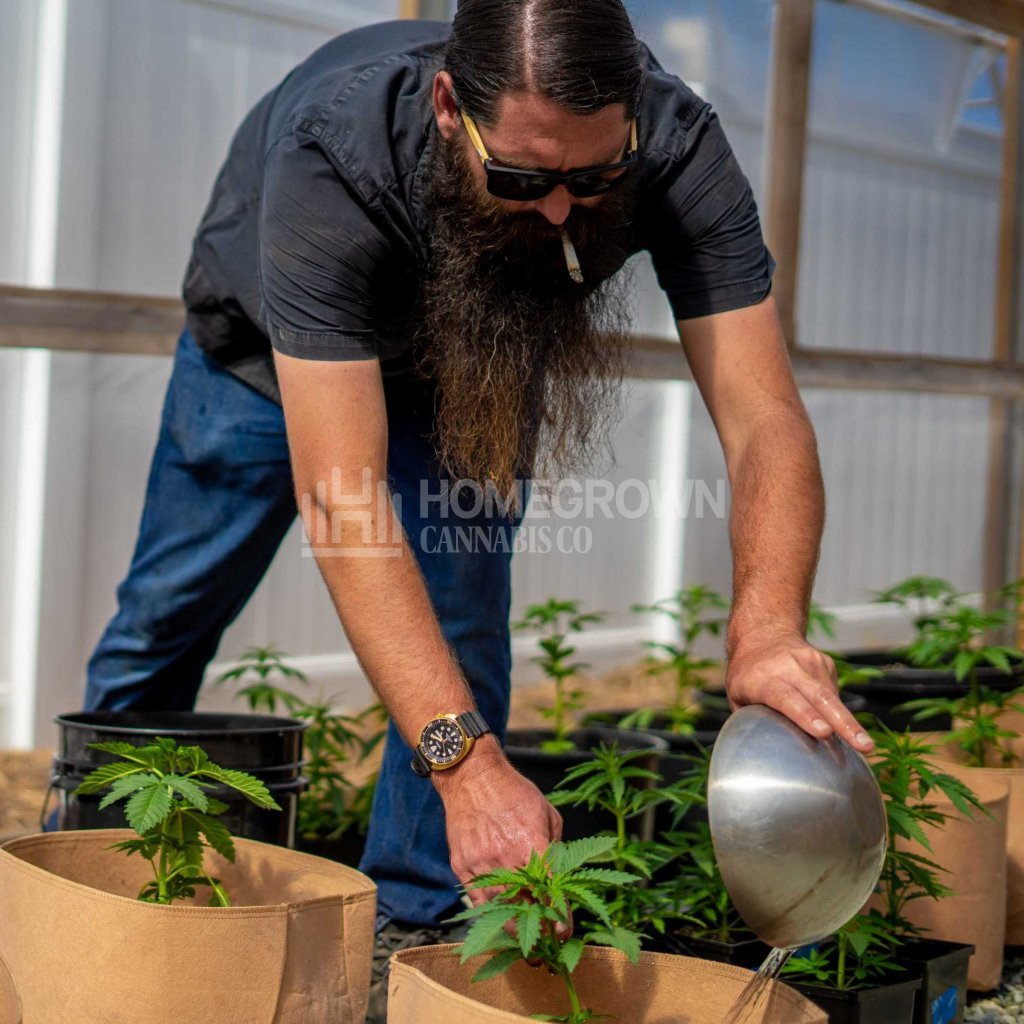
Water pH for cannabis
pH stands for potential hydrogen, but it's simply a measure of acidity or alkalinity of your water, nutrients, or medium. pH can range from 1 to 14. Marijuana crops prefer slightly acidic H2O. The perfect pH water for cannabis plants in soil ranges between 6 and 6.8, while hydro spans from 5.5 to 6.5.
It's most likely that pH is off if you're dealing with deficiencies or nutrient lockout in your medium. High or low water pH for cannabis means your plant won't uptake all the macro and micronutrients it needs to survive.
It’s easy to ensure you’re getting the best water for growing marijuana in a hydroponic nutrient solution. pH can go up or down depending on the additives you're using. Testing runoff water is an excellent way to tell if your medium is too alkaline or acidic.
For example, soil brings up the pH if you saturate with a pH of 6.5, and runoff comes out at 7. The opposite is true if what you're putting in goes down significantly.
Adjusting pH in water
Add lime if pH is too low or a soil acidifier mix if pH is high. You can purchase both of these elements online or at many reputable grow stores.
Adjust water pH for cannabis using small doses of pH up or pH down to avoid huge fluctuations in readings. You can also use baking soda instead of pH up or white vinegar as an alternative to pH down.
Get pH up and pH down solutions because a single bottle usually serves most cultivators for many years through successive grows. Buy kits, pens, or probes in any hydro store or online to test the water pH for cannabis.
You don't need to test pH every time because it's usually the same if using the same water: unless your source is unpredictable. Always adjust water pH last if adding mineral-based nutrients and additives that fluctuate pH.
Tap water often has higher pH than the recommended range, so you'll have to fix it with pH down. Adding mineral-based nutrients to your liquid also affects pH, so adjust accordingly.
Some growers like to increase water pH for cannabis to the upper limits to uptake more flowering nutrients. For example, start with a pH of 6 in hydro and bring it up close to 7 to soak up more potassium in flowering marijuana plants.
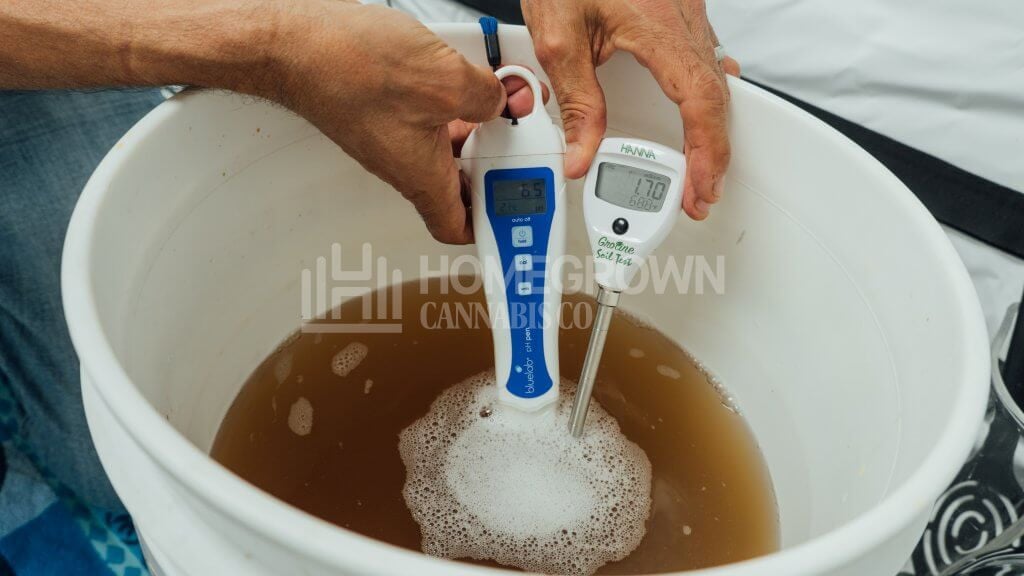
Water temperature for cannabis
The best water temp for cannabis plants ranges between 68 and 73℉. Warm water (above 73℉) low in oxygen can lead to an anaerobic environment in the root zone, opening the door to diseases like pythium (root disease). Cooler water high in oxygen provides the best water for growing marijuana.
There are circumstances, like a recirculating water garden, where plants are especially vulnerable to root diseases. Lower water temperature for cannabis to around 60℉ to reduce the chances of contamination.
Water that's too low, below 55℉, can shock your plant. When you hydrate crops with cold water, it lowers metabolic capacity, reducing overall growth and production.
Keeping water temperature for cannabis cool is tricky because an ideal grow room has air temperature that's a bit higher, between 75 and 88℉.
The best cooling method depends on what's comfortable for your setup. To keep water temperature lower, you can:
- Add cold or hot water to adjust accordingly.
- Use cooling equipment.
- Add bottles filled with ice in the reservoir.
- Physically move basins to a cool area away from lights and electrical equipment.
Keeping light out of the reservoir also prevents algae proliferation. Cooler water is especially vital in a deep-water culture (DWC) setup since the roots are always in an oxygenated nutrient solution.
What type of water is best for cannabis plants
The best water for cannabis has the right temperature, pH, and PPM. Getting these factors right is important. It's heartbreaking to go the extra mile, only to find out that your first grow went down the drain due to bad water.
H2O issues often have more impact than other factors like light and nutrients. Here are the different water sources and their nuances.
Tap water
Most countries add chlorine to the water to kill microbes and bacteria that are detrimental to humans. Excessive chlorine can also harm your plants and lock out other nutrients it needs to survive.
Remove chlorine by letting the water sit in your reservoir or bucket for a day or two. You could add air stones to speed up the evaporation.
For chemical neutralization, use an agent like sodium sulfate or Campden tablets. However, these additions increase PPM for cannabis plants, so be sure to adjust after.
Some municipalities use chloramine and fluoride, usually removed using activated charcoal in a filter. Some regions have hard water and chlorine. For these reasons, make sure you test your tap water to identify the mineral content.
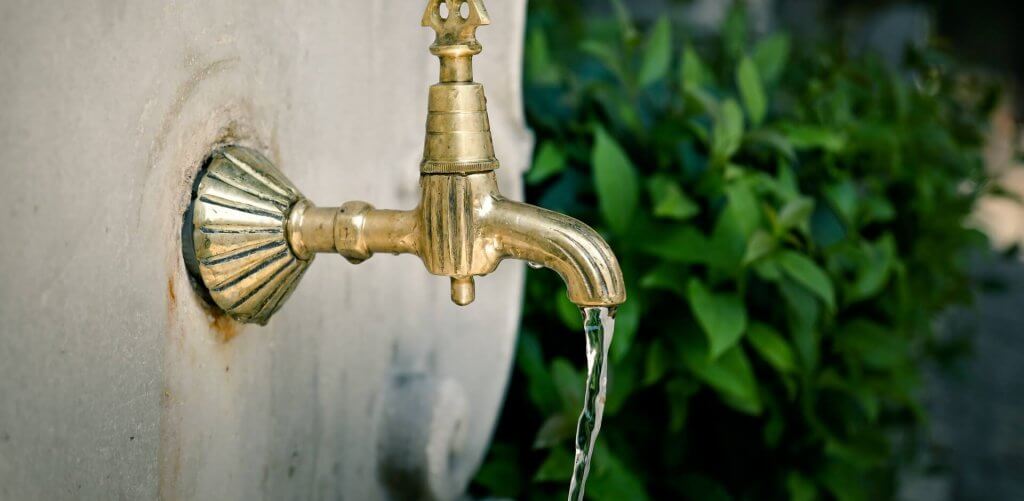
Rainwater
Rainwater's great because of its typically neutral pH and good PPM for marijuana. Pollution has unfortunately affected its quality so much that you have to be careful in some regions. Soft rainwater is an excellent base to start with, provided there’s plenty of precipitation where you live.
Rainwater soaks up minerals as soon as it runs in soil and is one of the best types of water for plants. This source is cheap and has a naturally balanced pH. However, pH can vary in highly industrialized regions, becoming more acidic than ideal, so ensure you always check the levels.
Distilled water
Distilled water is like reverse osmosis (RO) water, which lacks minerals. Dial in the PPM using a reverse osmosis system if you live in an environment where you have natural, hard, well water from the tap.
Starting with distilled water for growing marijuana isn't cheap but guarantees your plants get the right nutrients.
Is distilled water good for cannabis plants?
Many growers like to use reverse osmosis (RO) or distilled water for cannabis to be safe because it's pure, clean, and straight. Starting with a flat base is excellent because you can add exactly what the plant requires.
Unfortunately, distilled water strips out some minerals you need in the plant, like calcium and magnesium, so you need to add them back. Many growers also temper RO water using tap water to get other macro and micronutrients back in it.
Will distilled water kill plants? Yes, the plant could die if it lacks other sources of nutrition, like in a hydroponic system. Distilled water has no salt that creates electrical conductivity.
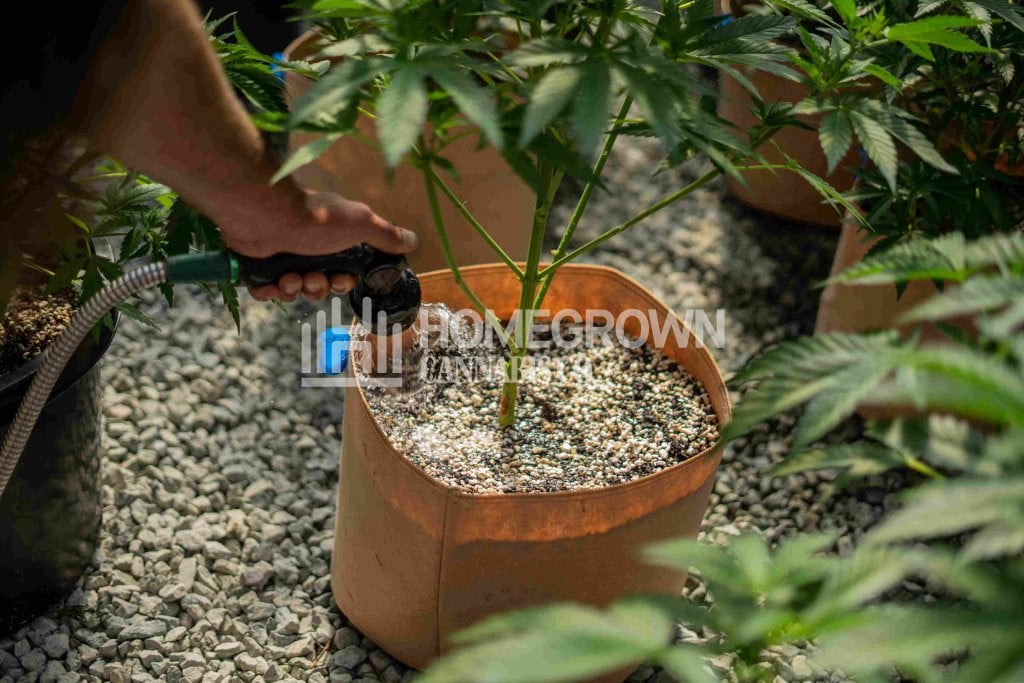
Signs of water problems in your cannabis plants
Cannabis plants won't reach their full potential without the best water for marijuana. Surprisingly, most people over-water rather than underwater. Too much water deprives roots of oxygen, drowning the plant, ultimately leading to root rot or fungus.
Underwatered weed symptoms include:
- Drooping leaves
- Leaves seem papery and dry because they don't have enough water inside them
- Yellowing leaves and nutrient deficiencies from chronic underwatering
Overwatering manifests itself with drooping, yellowed leaves, and a slow rate of growth. Add perlite to your soil to increase its drainage rate.
Look at all the symptoms laid out to work out the right amount and frequency of watering your weed plants. Implement a wet and dry cycle. Ensure adequate pH, temp, and PPM for cannabis plants to avoid nutrient lockout and deficiency issues.
Test EC or PPM and pH of runoff water collecting in your drain tray or plant saucers to detect potential problems in your medium. There's an issue in the root zone if you record a huge fluctuation between your input and output (runoff water).

4 tricks to have the best water for cannabis plants
Expanding our knowledge of cannabis leads to the best buds. Here are more tips to get the best water to use for marijuana plants.
Automatic watering
Switch to automatic watering if you have many plants to take care of. It’s untenable to hand water something like ten plants in a Sea of Green or Screen of Green setup. Ensure you have the ideal PPM for marijuana plants in their different growth stages.
Watering frequency
How often you water depends on different variables and factors like the medium you're using, how much you water at a time, the size of your plant, growth environment, and strain.
You need to hydrate more often if:
- Growing in a medium like cocoa compared to soil
- There's low humidity in your grow room, meaning your plant dries out faster
Only water when required to avoid root rot.
Runoff water
Runoff is the water that comes out of your pot after watering your plants. You don't get runoff with hydroponic systems, so measure pH and PPM range for cannabis in the nutrient solution.
You're likely to see some runoff if you're using soil, peat moss, potting soil, or potting mix that's not completely organic soil. Testing Runoff helps determine if there's too much fertilizer in your medium or if you have some issues with pH.
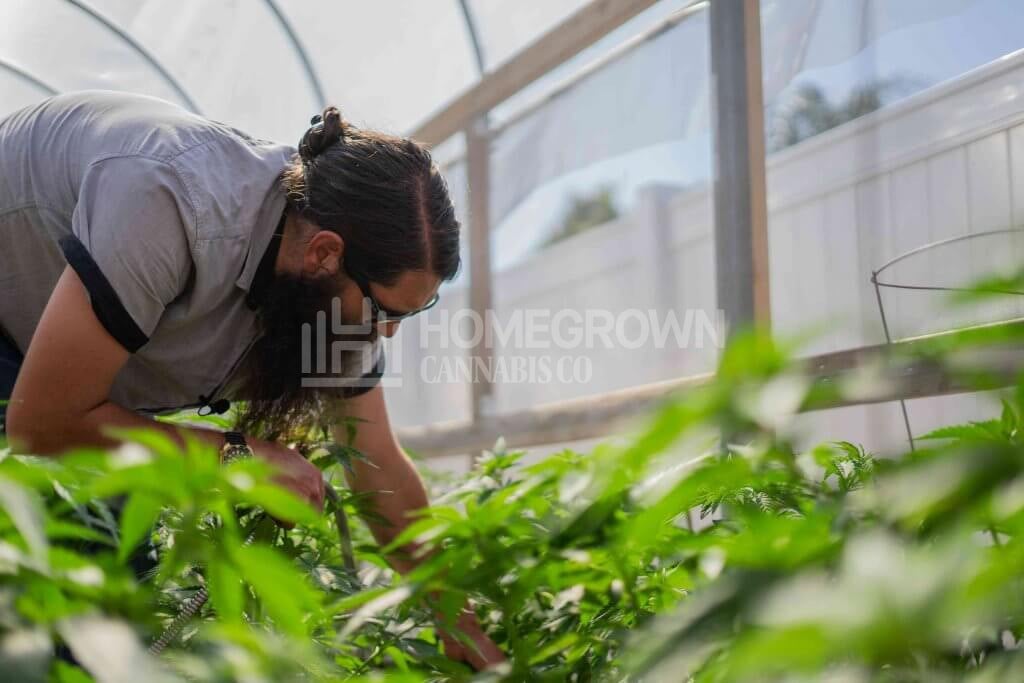
Water quality data online
Search online and see if you can find any information about water supplied in your region. For example, the US Geological Survey National Water Information System might have reported on your source.
Best water type
It’s easier to start with distilled or rainwater instead of tap water that may have too many minerals or chemicals in it. Rainwater has high oxygen levels, and distilled water is completely free of toxins.
No water, no life
Water is the driving force of nature. The best water for cannabis plants depends on several variables. Test the pH and PPM of your water and adjust both as required to avoid nutrient issues.
Most rural areas get hard water with excessive natural minerals that need filtering out.
Don't forget, distilled water for cannabis offers a good base to start with.
Check out more guides similar to this one in our nutrients and water blog section. Contact us if you require any assistance with your garden. We're always happy to help!
About the author: Derek LaRose
Also known as Kronic from The Cannabis Kronicles, Derek LaRose is a young ambitious cultivator and a staple educator for indoor cultivation.


